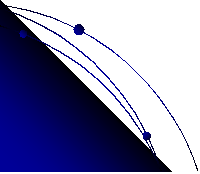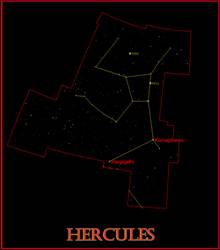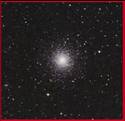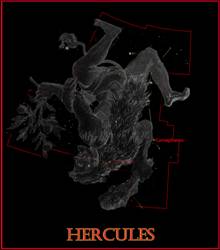
Constellation Hercules
The
fifth largest constellation in the sky but not especially bright, commemorates the great
hero of mythology.
It is best viewed in July & August
The center of the Constellation Hercules consists of a quadrangle known as the ‘Keystone’. The
figures arms and
legs extend from the corners
The brightest star in the constellation, Rasalgethi (Alpha Herculis; Arabic-the Kneeler’s
head’) is a variable red supergiant
Constellation Hercules contains two globular clusters, M13 & M92. M13, aka as the Hercules
Cluster, is the brightest
in the northern hemisphere. It is noted as very remarkable, extremely bright and very rich
in stars. This
cluster is estimated to contain 500,000 stars


My film shot of M13, a composite image
consisting of two at 60
– minutes and one at 15 - minutes total
